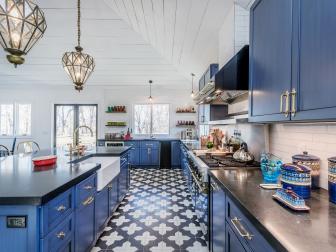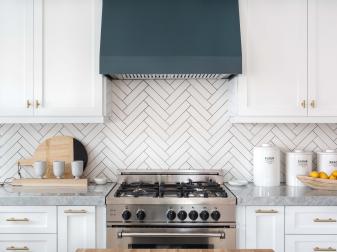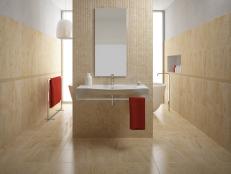Porcelain vs. Ceramic Tile: What's the Difference?
Ceramic and porcelain tiles share many similarities, but they also have noteworthy differences. Learn the pros and cons of each material to help you decide which is the better choice for floors, walls and other tile projects.
Ceramic and porcelain tiles are highly popular with homeowners, who seek these clay-based materials out for their durability, timeless aesthetic and relative affordability. “Porcelain and ceramic tend to be more cost-effective since they do not need to be mined from the earth,” says Kendra Nash of Nash Design Group. “They are man-made materials that are less delicate compared to natural stone.” Ceramic and porcelain share many similarities, but they also have noteworthy differences, including porosity, maintenance and cost. We’ll take a look at the pros and cons of each material to help you decide which is the better choice for your home project.
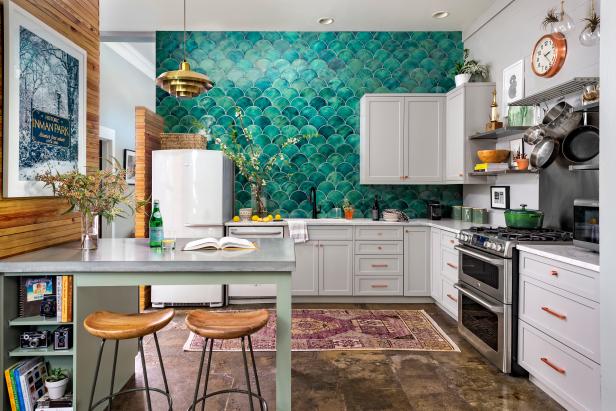
Cati Teague Photography
Ceramic Tile
How Ceramic Tile is Made
Ceramic tiles are thin slabs of clay, water or other inorganic materials, hardened at high temperatures in a kiln and usually coated with some kind of glaze. Ceramic is best known for its durability and relatively low cost compared to natural stone.
Ceramic tile is available in a wide range of colors and designs for versatile use and a sleek look. “Glazing allows for brighter color and a glasslike surface,” says Gary McCoy, Lowe’s store manager for the Charlotte, NC, area. Tile sizes range from tiny mosaic to large format and come in just about any shape imaginable. Choose from almost any installation pattern and incorporate trim pieces, borders and inlays to accentuate decorative elements. Mix and match colors and sizes for visual interest, or repeat the same styles on walls, countertops or showers for a cohesive look.
What Ceramic Tile is Best Used For?
Ceramic tile is a suitable choice for many areas of the home, whether it’s walls, floors, countertops or backsplashes. It's resistant to moisture, stands up to stains and won't absorb bacteria or odors. Since it often feels cool, it's a good flooring option in rooms that tend to get hot during warmer months. On the PEI scale, which rates the hardness and durability of tile materials, ceramic tile is rated from 0 to 5 based on hardness. Zero through 2 is suitable for wall tile, and 3 is good for most residential uses.

Cassidy Garcia, Styling by Chelsea Faulkner
Hardness Rating Scale
- PEI Class 1 Rating (no foot traffic): Recommended for wall use only in residential and commercial applications
- PEI Class 2 Rating (light traffic): Recommended for both wall use and bathroom-floor applications
- PEI Class 3 Rating (light to moderate traffic): Recommended for countertops, walls and floors where normal foot traffic is expected
- PEI Class 4 Rating (moderate to heavy traffic): Recommended for all residential applications as well as medium commercial and light institutional.
- PEI Class 5 Rating (heavy to extra-heavy traffic): Recommended for all residential as well as heavy commercial and institutional applications.
Advantages of Ceramic Tile
Ceramic tile can last for decades and stands up to tough wear, with the ability to withstand water and foot traffic. Ceramic tile is also approachable to install for DIYers. Unlike porcelain, which is extremely hard to cut, ceramic is softer and can be cut cleanly with a basic tile cutter. It is a versatile option if you’re looking for a tile that can be used in multiple rooms of your home.
Disadvantages of Ceramic Tile
Compared to porcelain, ceramic tiles are less durable. So, you may want to install ceramic tiles in low-traffic areas and surfaces that don’t receive much wear and tear. Ceramic is also more porous than porcelain, which means it absorbs liquids more readily. “Porosity ratings are very important,” says McCoy. “Porosity is the ratio of voids (or air holes) to solids in a tile, which affects the percentage of water absorbed into a tile.” The higher porosity means ceramic tiles are more prone to stains and moisture absorption. As a result, they require more frequent cleaning than porcelain. If your budget allows, you may opt for porcelain in areas prone to wetness.
Ceramic tiles can vary in size and color from lot to lot, which matters to homeowners who are particular about keeping an even appearance. Also, keep in mind that without radiant heat underneath, ceramic tile can be cold on your feet and uncomfortable to stand on for long periods.

Anice Hoachlander/ Hoachlander Davis Photography
Cost of Ceramic Tile
The cost of ceramic tile is relatively low compared to other tiles. At a cost of $1 to $35 per square foot, uninstalled, it is an affordable option.
How to Clean Ceramic Tile
Ceramic tile is extremely easy to clean. Be sure to avoid abrasives such as steel wool and scouring pads lest you scratch the tile surface. Since ceramic can withstand high-heat, a steam mop, like the Shark Hard Floor Cleaner, is a great option.
Porcelain
How Porcelain Tile is Made
Technically, porcelain is a type of ceramic, but porcelain is crafted from a mix of higher-grade clays and fired at more extreme temperatures than ceramic. This makes porcelain harder and denser than ceramic tile, and also more durable and less porous.
There are two basic types of porcelain tile. In through-bodied porcelain, the color and texture run all the way through the tile, disguising chips or scratches. Strong and durable, it contains no glaze that can wear off. It's suitable for floors, walls and countertops. Glazed tile is completely covered in a wear-layer or hard finish that is typically colored. It is strong and dense and offers the widest range of colors and designs.
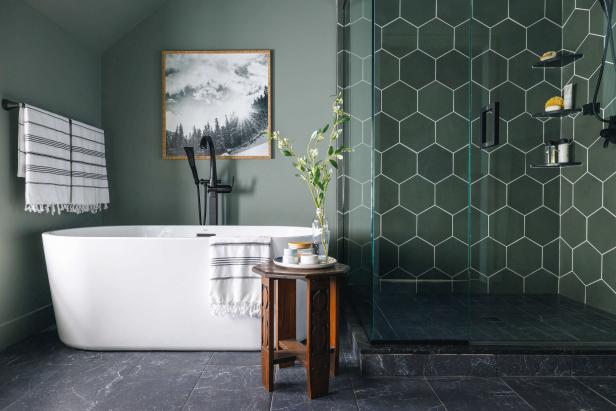
Tomas Espinoza
What Porcelain Tile is Best Used For?
Porcelain tile is a popular choice for bathroom floors since the toughness and low porosity offer greater stain and water resistance than ceramic tile. Since porcelain is so much more durable than non-porcelain ceramic, it’s also a good choice for surfaces that receive a lot of traffic, such as kitchen floors and countertops. “Porcelain is a very durable man-made material that can be used in high-traffic spaces or in kids’ bathrooms,” says Nash. “It does not etch or stain over time, like a natural stone.”
Porcelain is suitable for radiant in-floor heat to keep feet toasty on cool evenings. Porcelain also offers unmatched design versatility. Tiles can mimic natural stone varieties, such as granite and limestone. Newer designs draw inspiration from exotic locales and fashion runways, with surfaces that evoke leather, fabric or even animal prints.
Top 45 Kitchen Design Trends 45 Photos
From colorful cabinets and gold accents to statement backsplashes and unexpected range hoods, get inspiration for adding the latest kitchen design trends to your home.
Advantages of Porcelain Tile
Thanks to its durability, porcelain tile will last for years and stand up to heavy foot traffic. The low porosity makes it resistant to splashing water, staining, bacteria and odors.
Disadvantages of Porcelain Tile
Porcelain is more costly than ceramic, but more affordable than natural stone. While its durability can be beneficial, it can also make the tile trickier to install. The tile is extremely hard to cut through, requiring specialty tools. If you want clean cuts and precise installation, you’ll want to hire professionals rather than install them yourself. Porcelain tiles also require a modified setting material to anchor it to a substrate. Do-it-yourselfers typically install it with setting material designed for ordinary ceramic tiles, but porcelain's low porosity requires a special compound for setting.
Cost of Porcelain Tile
At $3 to $10 per square foot, porcelain is relatively inexpensive, though installation will drive up the price.
How to Clean Porcelain Tile
It’s easy to clean, requiring a simple sweep or vacuum once or twice a week and cleaning with porcelain-friendly cleansers once a month or so. You’ll want to avoid abrasives such as steel wool and scouring pads, and do not use cleaners with bleach or ammonia. Unglazed porcelain requires more frequent cleaning.
What's the Verdict?
While ceramic and porcelain tiles are both durable and affordable options, your selection will depend on where the tiles will be installed, the traffic flow of the particular area and your budget. If you are looking for a more versatile style, porcelain tiles will be a better option. If cost-savings is more important, ceramic tiles will be a good choice. Either way, it's hard to go wrong with porcelain or ceramic tile for your next remodel project.








